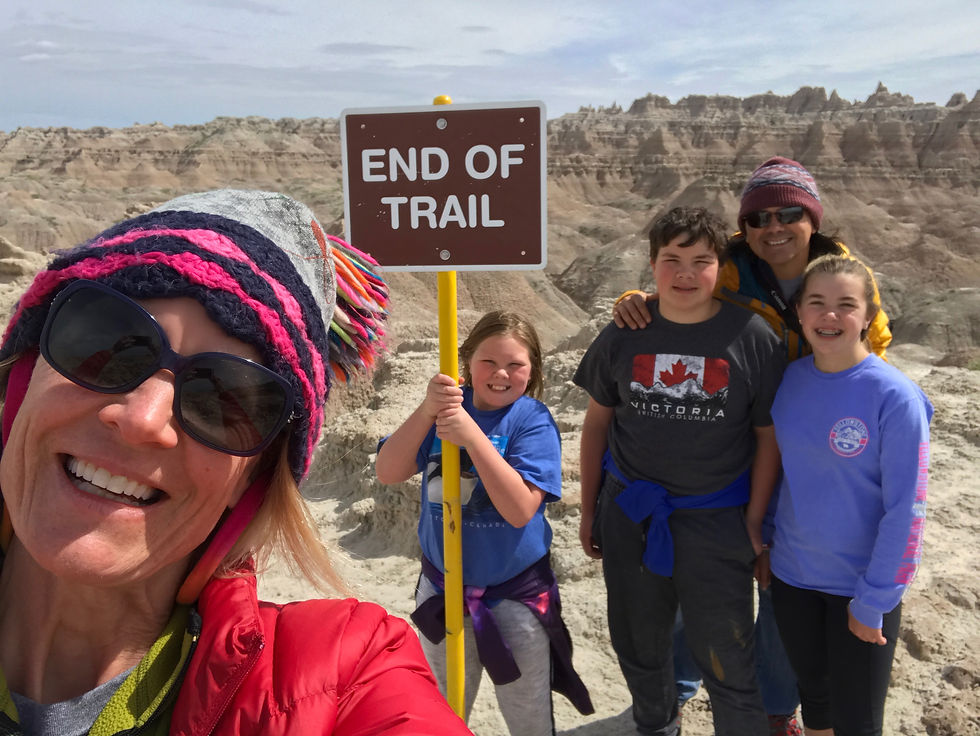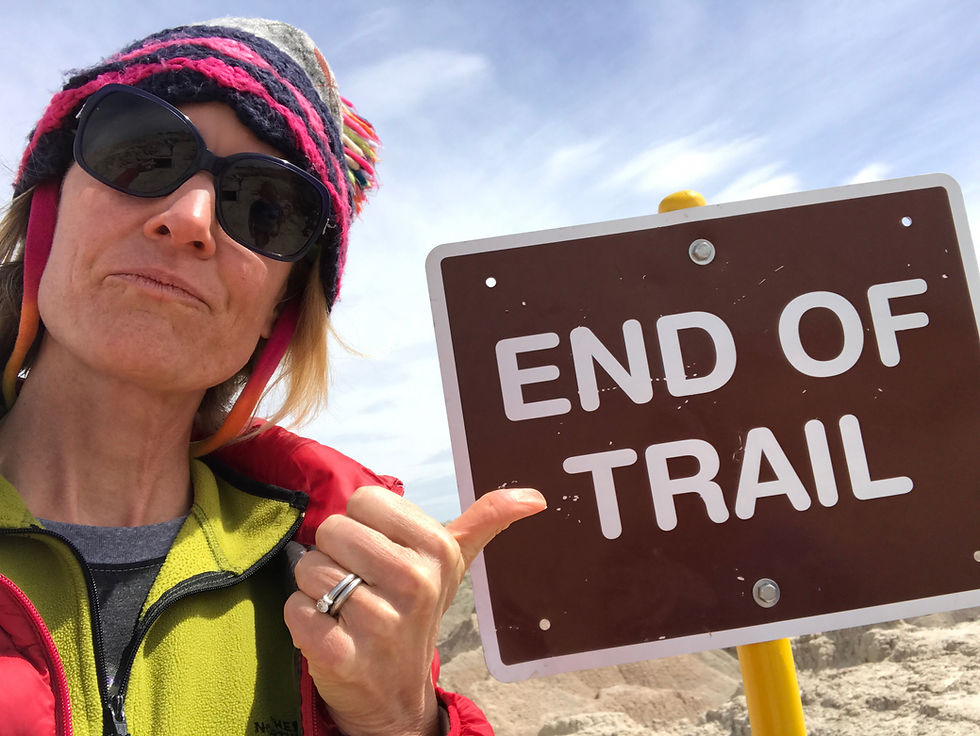Badlands

I really never knew what 'The Badlands' were. I slightly remember from geography class, castle-like formations somewhere near the Dakotas, but then the AMC film feature, "Into the Badlands" pops up and all memory is twisted and translated. In my wildest dreams, I never thought a place like this existed in the Great Plains!

Why call it 'Badlands'? The Lakota Indians were the first to call this place "mako sica" or "land bad." Probably because of the unpredictable temperatures, no water, and rugged terrain. In the early 1900's, French-Canadian fur trappers called it "les mauvais terres pour traverse," or "bad lands to travel through." We travelling-O'Do's have named it, 'bad to the bone' jaw-dropping!

Let me ask you, are sitting there thinking, what's in South Dakota, let's skip it and go straight through Wyoming to Colorado? To that I say 'No, no-no-no', do not pass SoDa, at least make Badlands your only stop!

Located in southwestern South Dakota, Badlands National Park is 244,000 acres. While we could easily spend weeks exploring the terrain, we stuck to a handful of distinctive sights for our abbreviated trip.

The Badlands are a wonderland of bizarre, colorful spires and pinnacles, massive buttes and deep gorges. Erosion of the Badlands shows layers of different colors: purple and yellow (shale), tan and gray (sand and gravel), red and orange (iron oxides) and white (volcanic ash). I admit, my middle schoolers helped me on this interpretation, they are finishing up geology in science:)

Badlands National Park protects the world’s greatest fossil beds of animals. The skeletons of old-timey camels, three-toed horses (um), saber-toothed cats (cool) and giant rhinoceros-like creatures are among the many fossilized species found here. Prehistoric bones are still being uncovered today by park officials.
Our explorations:
The Badlands Wall: Known as the "Wall," the most popular feature of the Badlands is a hundred-mile stretch of rugged cliffs that cuts through Badlands National Park and is home to many of its hiking trails.

The Badlands Loop: To get a broader view of the terrain in our short time here, we took a drive along Badlands Loop Road. The loop is a 32-mile circuit that runs through the most popular and easy-to-see views of the park.

Prairie Dog Town: This was hilarious to us, we first noticed all the 'hills' of dirt. Once we looked closer, we saw 100's of fat prairie dogs running about. Come to find, this former homestead has been converted into a massive network of tunnels, making it easy to see the black-tailed prairie dogs up close. At home they annoy us, here they are just too cute for words!



Badland Species: We thought we saw it all at Yellowstone, but in Badlands, Bison weren't the only animals blocking the roads. During our hour drive, we saw mule deer, white-tailed deer, Rocky Mountain bighorn sheep, and 2,000-pound bison. There is said to be 39 species of mammals may be found on the Badlands prairie.


What was truly fitting for this stop, was the sign we met up with, 'End of Trail'. While the Badlands Park is our last National Park on this 6-month trip, it's not our last adventure or trail for that matter.

















































